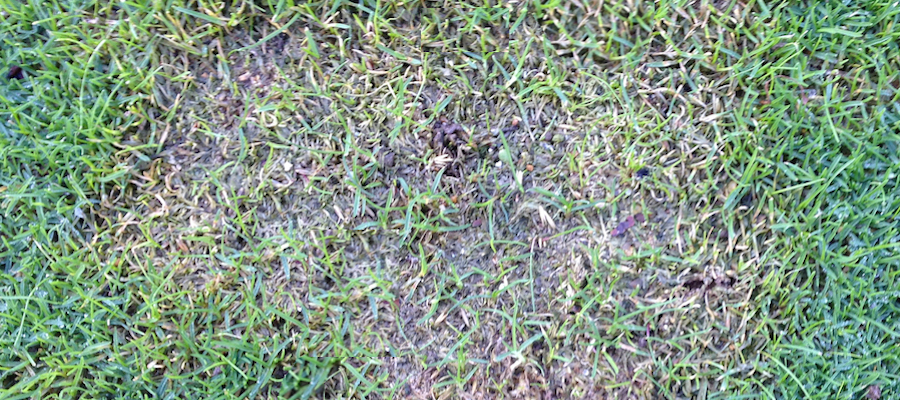Disease Triangle 

A graphic, as a triangle, which represents the three key features which must be present for a disease to develop. The three features are:
1. Pathogen ¯ this might be present within the vegetation canopy, thatch or the soil;
2. Host ¯ species which are susceptible to the pathogen. The pathogen might affect a single species or many;
3. Environment ¯ conditions need to be favourable to the pathogen, which might include adequate moisture, soil pH, nutritional status of the soil, or temperature.
Dollar Spot 

A small patch disease which can spread to form larger irregular areas. It is common on warm-season turfgrasses, especially Bermuda Grasses, and also occurs on cool-season turfgrasses.
Downy Mildew 

Fairy Ring 

A disease of turf, but often classed as a disorder due to the indirect causes involved, consisting of three main types:
• Type 1, which is the most serious, producing a dead zone within a ring that is surrounded by grass growth either side of the dead zone. This type is mostly caused by the fungus Marasmius oreades. Moss and weeds typically start to colonise the dead grass area of a Type 1 attack.
• Type 2 and Type 3 primarily have a cosmetic effect on the turf: Type 2 produces a green band like ring of flushed growth, sometimes with mushrooms, toadstools or puffballs being present.
Flock 

An open, globular type in shape, cotton wool like appearance of some disease infected turf where the mycelium grows amongst the grass leaves. Red thread and pink patch are two common diseases which may also have flocks of whitish-pink mycelium present.
Fungal Pathogen 

A fungi which infects a plant, or other organism, causing it harm.
Fusarium Blight 

A disease of European countries and the USA, but not the UK, which can affect the leaf, crown or root. Fusarium culmorum affects bent grasses, whilst Fusarium poae affects Smooth Stalked Meadow Grass.
Fusarium Patch 

A turfgrass disease which is now more generally referred to as Microdochium patch. It is arguably the most destructive turfgrass disease and most turf grasses are susceptible to it.
Continue reading about this
Fuzz 

An informal term used to refer to Fusarium patch disease.
Ghost Grass 

A disorder or disease of grass caused by bacteria (Acidovorax avenae, and other species) which causes fine, bleached white or yellow coloured, sporadic and irregular length etiolated growth, to appear overnight, especially in golf green situations which are maintained under intensive, stressed, and especially very short (<3.5mm) mown conditions, as well as in the more compact areas of a green, for example, around the green edges and approaches. A decline in turf quality may or may not also occur with this condition. The etiolation looks, in some ways, like the die back that occurs on a grass l
Continue reading about this